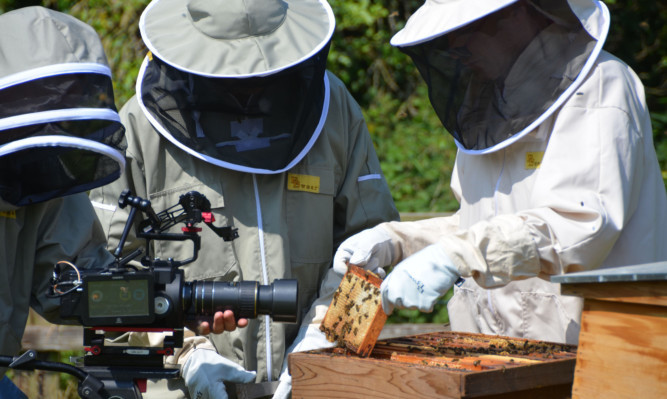
Buzzing with brilliantly mind-boggling bee facts.
When it comes to the natural world, I try not to get bogged too much in detail.
While I can enjoy birdsong or a beautiful flower as much as the next man, I’m not too worried about identifying exactly which species is involved or what makes it different from all the others out there.
Such indifference would surely horrify Chris Packham, a man whose depth of knowledge has made him David Attenborough’s natural successor.
There seems to be little Chris doesn’t know about our natural world and, if he doesn’t know, little he won’t do to find out. Last year, he dug up a warren to give us a glimpse of the previously hidden home life of rabbits.
In Hive Alive, Chris, together with fellow presenter and beekeeper Martha Kearney, turned his attention to bees, devoting the kind of resources that 007 would be proud of.
We saw bees fitted with tiny radio transmitters, followed by miniature helicopters and tracked by military radar. The latest slow-motion high definition cameras were deployed to show bees in the kind of detail that would probably surprise the bees if they could appreciate it.
We even saw him insert a microscopic camera into the heart of a wild bees’ nest. Having done something similar with a large stick when I was a (misguided) child, I had to raise my hat in admiration.
Before this programme I was happy just to know that bees visit the flowers in my garden, and produce honey for my morning toast.
Thanks to Chris and Martha, I now know that a bee will visit 2,000 flowers a day, and that it takes 50,000 miles of bee flights to produce just 1lb of honey.
Statistics just spilled out from the screen, from the fact their wings beat 230 times a second to bees’ amazing ability to take to the air carrying half their body weight in nectar and pollen.
I’m not sure how much of it all I will remember next time I spot a bee in the garden, but I’ll certainly appreciate the honey on my toast a wee bit more.

Enjoy the convenience of having The Sunday Post delivered as a digital ePaper straight to your smartphone, tablet or computer.
Subscribe for only £5.49 a month and enjoy all the benefits of the printed paper as a digital replica.
Subscribe